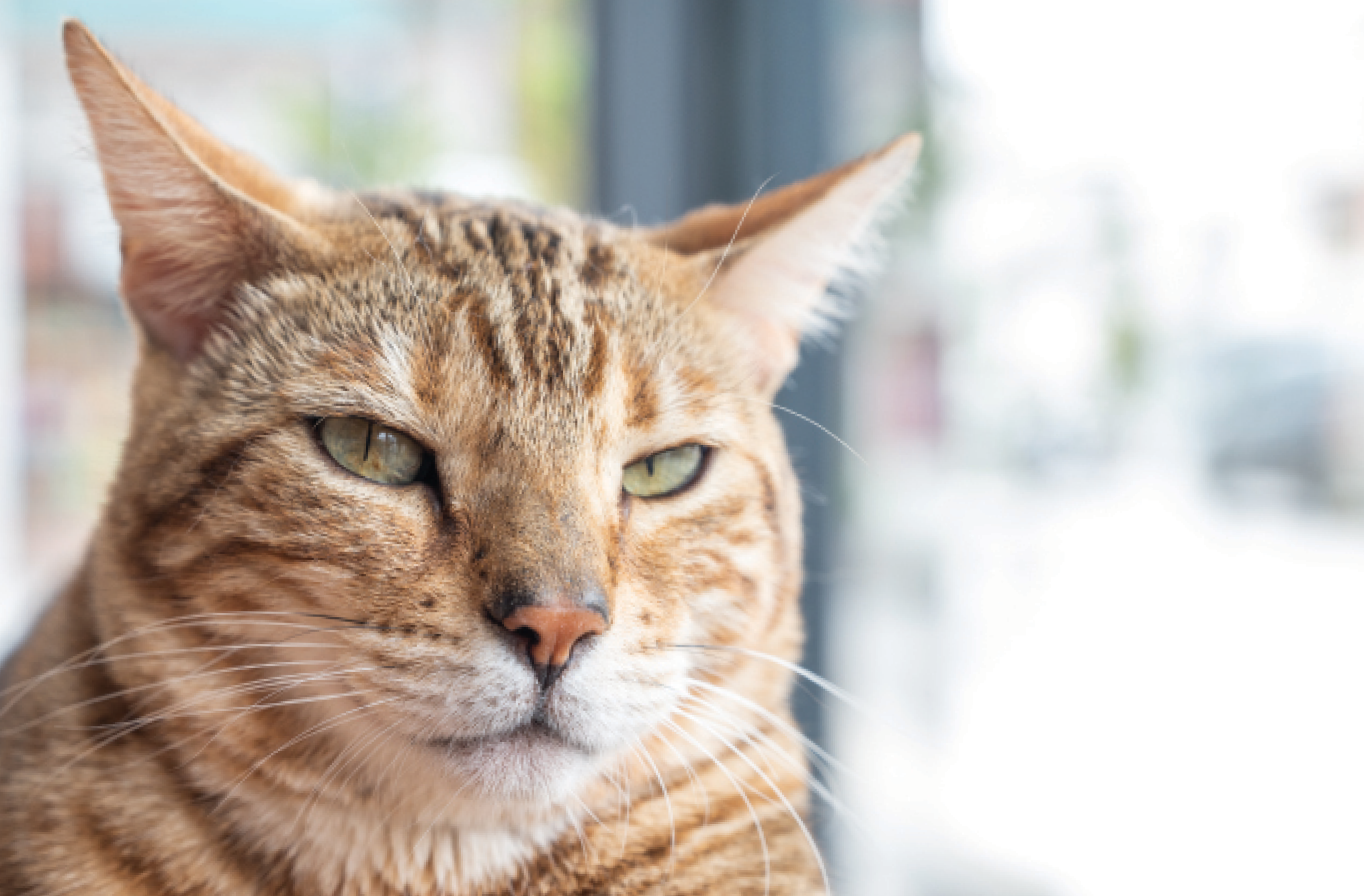One talent felines possess is the ability to move their ears independently. Although recent research shows that humans move their ears slightly when a sound piques their interest, only about one in five people can move their ears intentionally. For most people the movement is involuntary. That ability may make the person a YouTube star or the life of the party, but it doesn’t come close to the way cats swivel their ears. But why do they do this?
pinpoint sounds
One of the reasons cats move their ears is to pinpoint and identify what they are hearing. By moving their ears toward the sound’s direction, cats improve their hearing by 15 to 20%.
More than 30 muscles are involved in moving a cat’s ears, which can swivel 180 degrees. With a frequency range of 45 hertz to 64,000 hertz, cats not only have the broadest frequency range when compared to dogs, rabbits and humans, but they can hear higher and lower frequencies than all of them.
In comparison, dogs use 18 muscles to move their ears and can hear from 67 hertz to 45,000 hertz. Rabbits can swivel their ears 270 degrees, rotate them independently of each other and simultaneously listen to sounds coming from two different sources. Rabbits’ ear talent supersedes that of dogs and cats in some respects, although their range of hearing is narrower, falling between 360 and 42,000 hertz. Humans have similar hearing ability to dogs at lower frequencies, but at higher frequencies, dogs, cats and rabbits prevail. The human range of hearing frequencies is 64 to 23,000 hertz.
Communicate feelings
Cats’ ears are also an important part of their body language to express emotion.
➻ When a cat’s ears are pointing forward, he’s typically content. Contentment is also reported by an erect tail that’s slightly curved at the top, along with head bumps and purring. Cats welcome affection and attention when they are in this mood.
➻ When their ears are pointing straight up and accompanied by wide-open eyes and an alert stance, something they hear has their attention. If they rotate their ears quickly, something may have triggered their hunting instincts. This is a good time to get out their favorite interactive toy.
➻ Ears pointing sideways show fear that could lead to aggression. Give your cat space when his ears are in this position. Flattened ears pointing backward indicate a cat who is about to attack, bite or scratch. These are two ear positions, which can be accompanied by aggressive or defensive body language, indicating that your cat needs to be left alone. Signals of aggression include arched back, low and stiff tail, direct stare, hissing and growling. Signals of fear include crouching, tail curved around the body, hair standing on end, hissing and spitting.
➻ Similar to this position, when a cat’s ears are low and facing outward, she might not be feeling well. Cats are good at faking that everything is OK, but sometimes their ears betray them, so pay attention to the position of the ears and other body language. Cats also often hide when they’re not feeling well.
Because these ear positions may be similar, keep an eye on your cat’s body language, vocalizations and other behaviors.
Cat ears, along with their vocalizations and other body language, are prolific communicators. Their sense of hearing, in addition to other heightened senses and numerous talents, make them an impressive species that honor us with their companionship.
